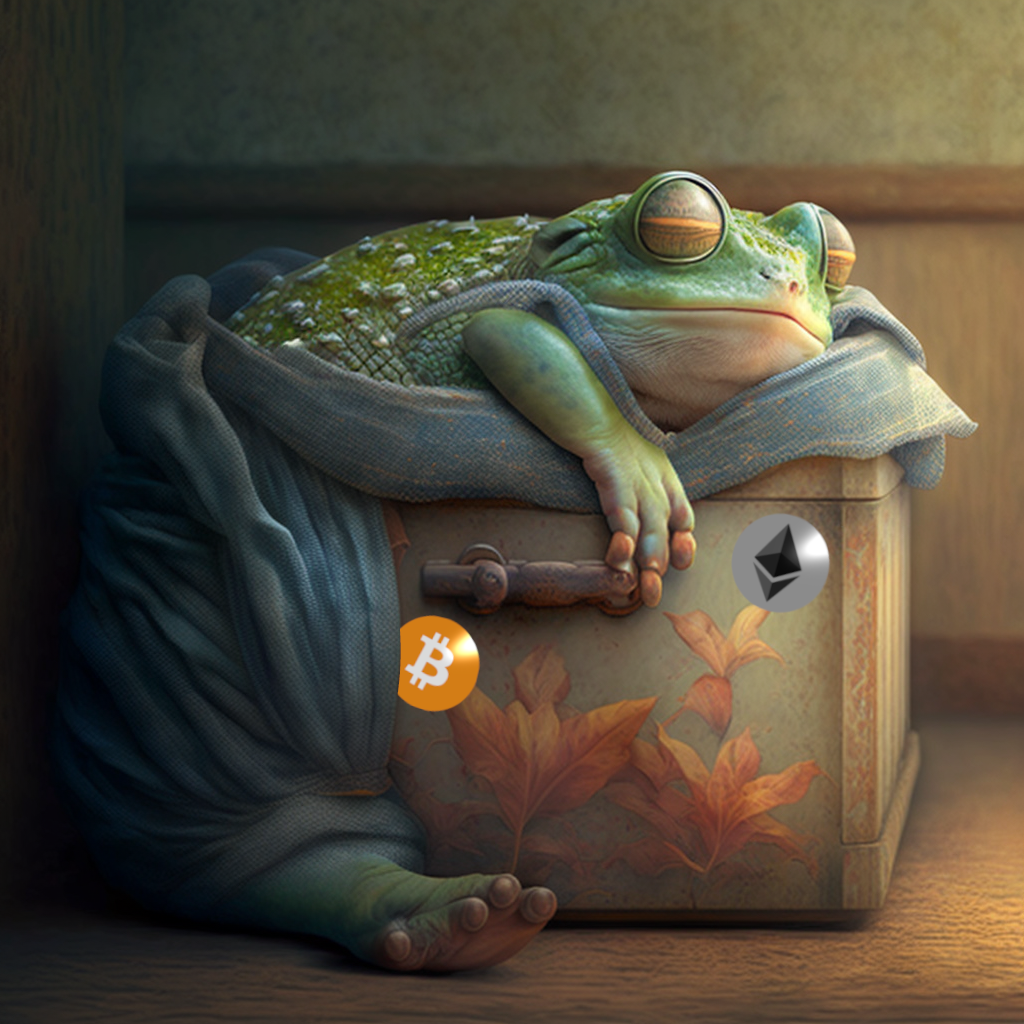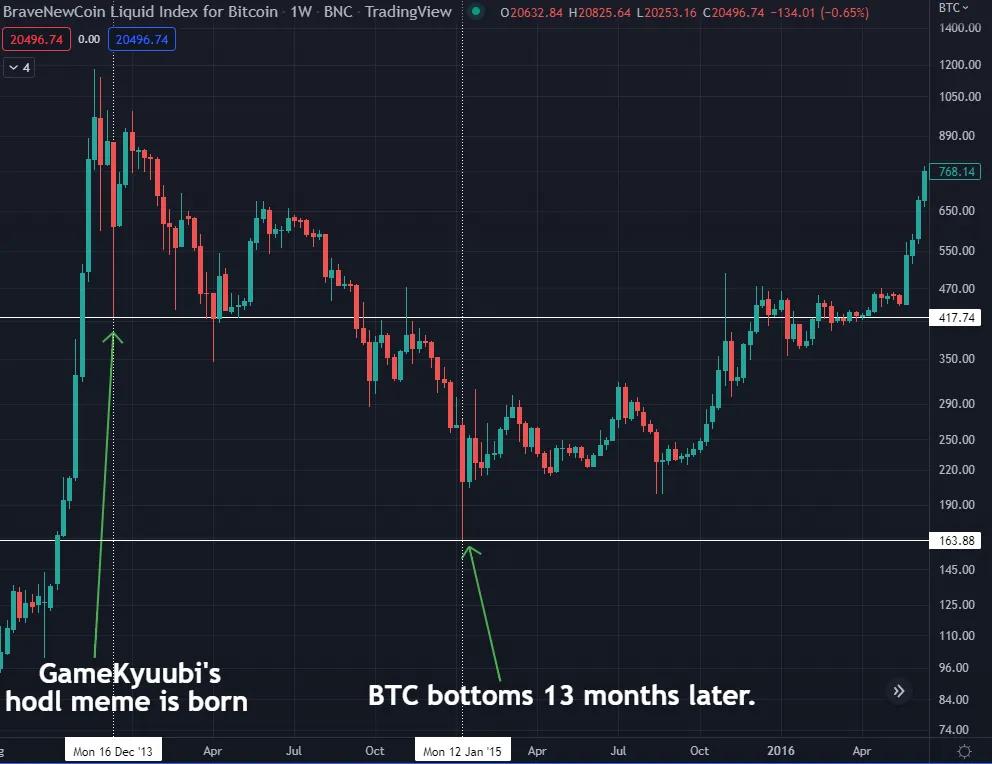Crypto HODLing Versus Trading
Do you sleep soundly HODLing, or do you enjoy the thrill of timing the market?

After months of deliberation and hearing stories from friends and family about how much money they have made from crypto, you’ve finally decided to take the plunge for yourself. You allocate some of your savings to crypto and have downloaded the Coinbase app, ready for financial freedom to be blessed upon you. That’s a great first step, but after making that purchase, when should you sell? Buy and hold until your $1000 investment in Dogecoin is worth an entry level lambo? Or sell after your portfolio adds another zero and simply buy back when it inevitably get repriced lower? Like most things in life, you’re likely to go about this all wrong the first time you consider hitting the sell button but let’s try to minimize the number of tries until you get it right!
Different Strokes For Different Folks
Depending on who you ask for advice on how to be successful in crypto, you’ll likely get different answers. Ultimately, there is no “right” or “wrong” answer for what strategy you should deploy. Everyone’s price targets and time horizons are different, with different amounts of willingness to be hands-on and deal with the tax burden of properly recording all your trades in a given year. In the end, the two main strategies are to HODL until you’ve reached financial freedom or take a chance at entering and exiting positions as you see fit. Let’s go over what makes both strategies difficult.
Holding On (for) Dear Life
By now, the HODL meme has gone pretty mainstream, but for those who don’t know, it’s a meme originating from a forum poster, GameKyuubi, who mistakenly typed ‘HODLING’ when talking about holding onto his BTC position during the extreme volatility that took place in December 2013. Since then, the crypto community has given the term ‘HODL’ the unofficial abbreviation for ‘Holding on (for) Dear Life’.

To give context as to why GameKyuubi’s conviction to HODL was significant, the day he made his post BTC had as wide as a -36% swing intraday. In dollar terms, that means from BTC’s then all-time-high of $1158 (just 18 days prior), BTC went as low as $417 for a whopping -64%. I don’t know about you, but seeing your portfolio halve in less than 3 weeks and saying to yourself “this is fine” sounds like great test of mental fortitude. In the end, GameKyuubi’s conviction to hold was the right move in the long term as we know that BTC is currently trading much higher presently but it’s only a win if he maintained that same conviction despite BTC’s downtrend for the entirety of 2014 before finally bottoming out at $163 in January of 2015. That’s -86% from the all-time-highs!

GameKyuubi would have to endure the -60% drop from $417 to $163 over 13 months before his HODL conviction pays off.
When non-crypto natives talk about crypto, it’s usually along the thought process of “if I had just bought BTC in 2013, I’d be richer than Elon Musk!”. But as we can see above, actually accomplishing that is easier said than done. Not only do you have to be willing to see your portfolio tumble -90% , you have to also be patient enough to wait for the capitulation of -90% to complete. Moral of the story: if you choose to HODL, you must commit 100% and not get cold feet despite waking up day after day to a bad price. Even then, there’s no guarantee that whatever coin you buy will make new highs if you wait long enough. The golden investment rule of “only invest what you are willing to lose” could not ring any truer for HODLers.
Trading The Swings
For those who have the time and willingness to micromanage their portfolio, they can look at the above BTC chart and say “well you could have just sold above $1000 and rebought below $200. That would have been a much better result than simply HODLing!”. This is true, but is falls victim to hindsight being 20/20. Anyone who has actually tried trading crypto knows just how difficult it is to sell the top and buy the bottom in real time. In fact, what ends up happening 99% of the time is actually overtrading. If you are staring at the chart in real-time trying to trade, you’ll often sell at a nice gain, but price will probably end up going higher. What do you do in that case? Buy back higher? If you do that enough times, you’ll eventually be buying the top. If you don’t buy back, can you really wait for the price to go lower than your original exit?
These are the types of situations that traders need a system for before you ever enter a trade. A clear defined set of rules that tells the trader when it’s ok to buy or sell, and more importantly when to wait. While every trader has their own system they tailor to their likes and needs, the overarching goal of any trader isn’t necessarily to buy the pico bottom and sell the absolute top. All a trader needs to do is catch the meat of the upswing and be offsides for majority of the downswings. The most overlooked part of being a trader is dealing with the situations when you’re wrong and having to accept that you will have to go to bed at a loss. More often than not, your emotions can come into play and make you operate out of the rules of your system and inevitably lose even more. This is colloquially called revenge trading and if you are the type of person to enter these kinds of fits of rage, trading is likely not for you.

Final Thoughts
Crypto is a volatile asset class. This means that it can bring vast amounts of wealth in a short period of time or can take vast amounts of wealth from you. It’s a double edged sword that most end up failing to utilize. If it were easy, it wouldn’t be the land of potential financial freedom it currently is. How you navigate this and make the most of it is up to you. Play to your strengths and if you don’t know if you should sell (as a HODLer or trader), here’s my one bit of wisdom you should ask yourself : what would you regret more? Sell now and see the price moon or not sell now and see the price do a -90% over the next year. If you clearly would regret one situation more than the other, then avoid that possibility. The same piece of advice can be applied to buying. Either way, good luck future HODLer/trader!
Any views expressed in the below are the personal views of the author and should not form the basis for making investment decisions, nor be construed as a recommendation or advice to engage in investment transactions. As always, please do your own research. This is not financial advice. Every strategy is not for everyone. Each investor needs to understand what is right for them.
Anime PFP Maxi Steven has proven to be a JPEG flipper of the highest order. While starting out as one of the resident Technical Analysis experts on shitcoins, Steven was slowly pilled on the virtues of NFTs -- especially those of the weeb variety. When he isn't using you as exit liquidity Steven enjoys long walks on the beach and intimate, candle lit dinners at McDonald's.